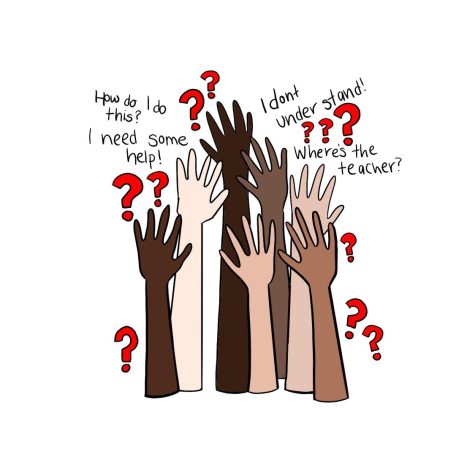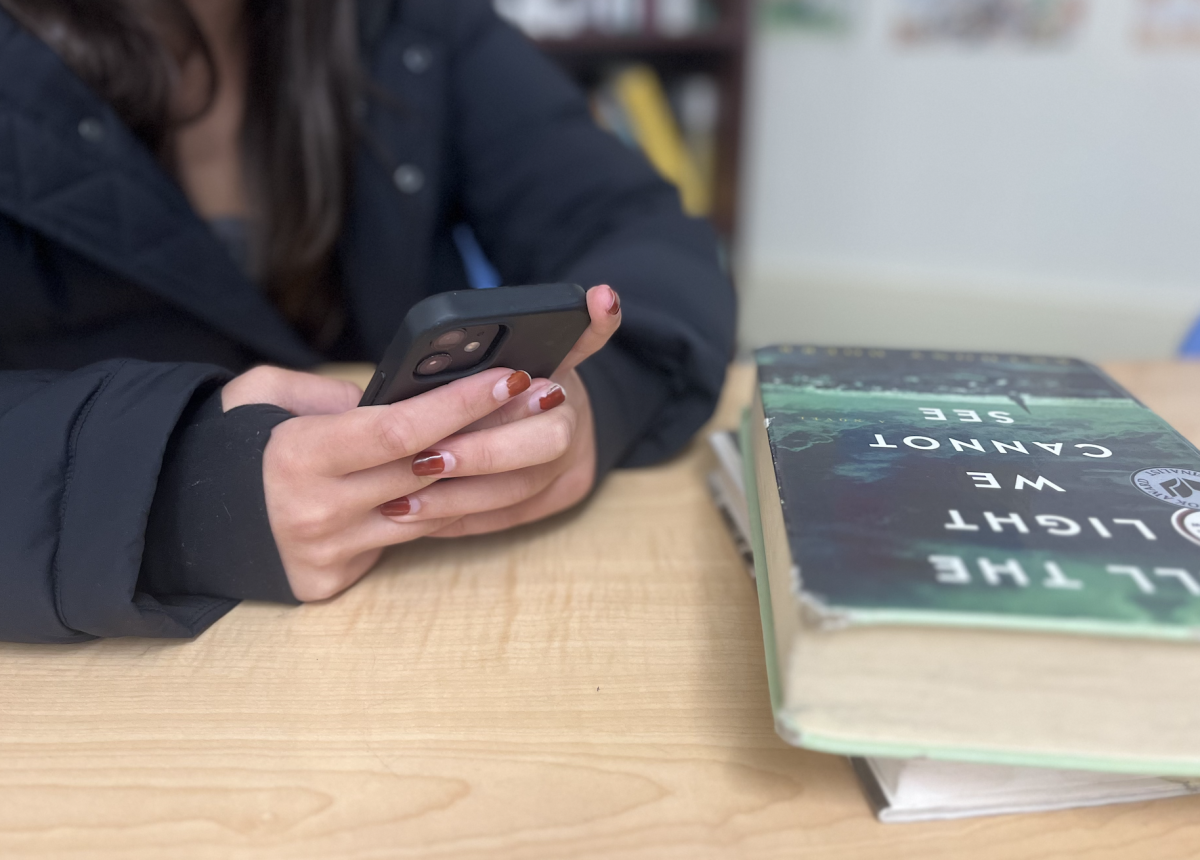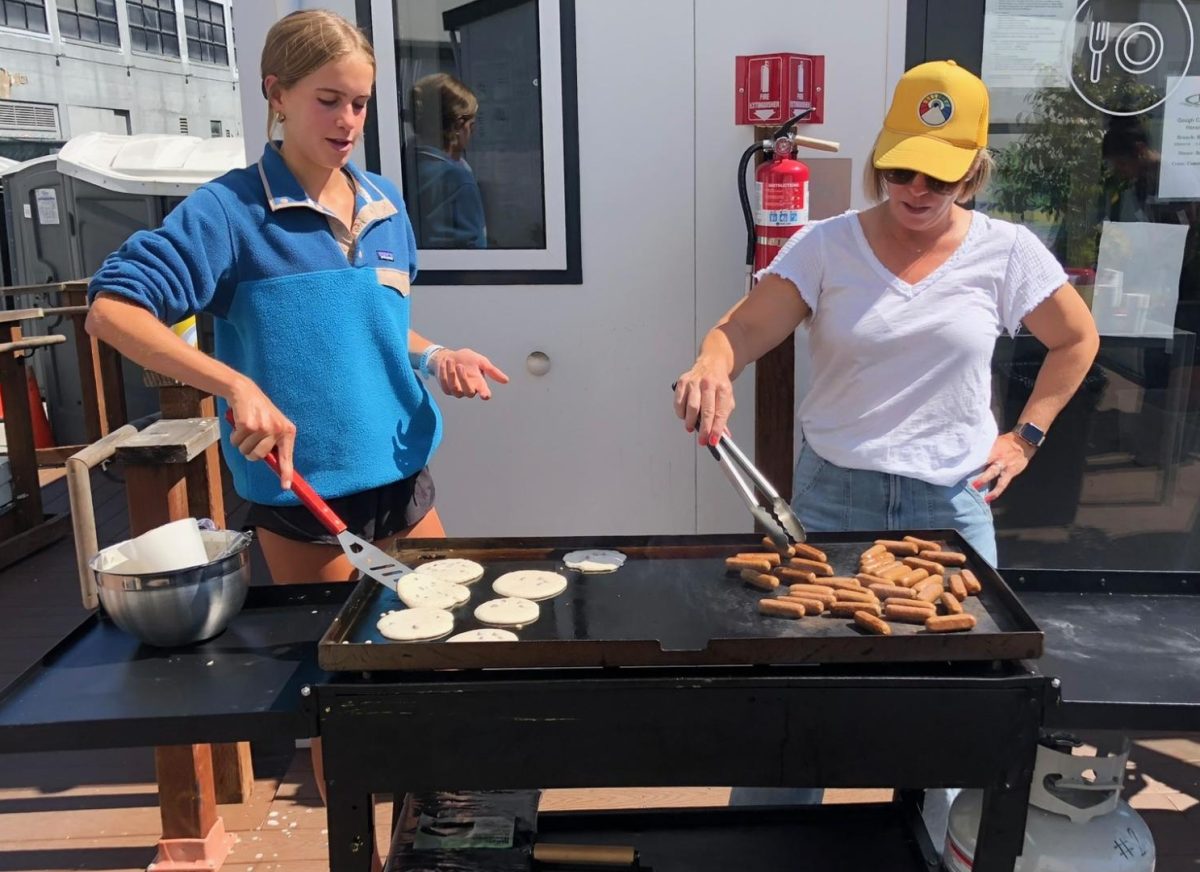Classrooms may continue to remain empty, but this time, it’s not just because of a pandemic. In addition to COVID-19’s continuous impact around the world, schools are confronting a much larger issue: teacher shortages. These deficiencies in teachers were a problem long before the pandemic even started, though COVID-19 exacerbated the issue.
According to the National Education Association (NEA), due to the COVID-19 pandemic, an astounding 55 percent of educators are considering leaving their teaching positions earlier than originally planned. For many, this decision comes down to health risks. Teachers surrounded by students, peers and administrators are at a high exposure level, which is especially threatening for those 65 years old and older. As a result of this, many teachers are weighing the benefits versus the risks of continuing to teach.
Andrew Schumacher, a part-time attorney and former teacher who currently substitutes at Redwood, acknowledges the reasons behind teachers leaving and substitutes becoming harder to find.
“Many teachers have quit because the risks were too great and the stress was too high. Many teachers are at an age where their health is more compromised. Similarly, substitute teachers, many of whom are already retired, are taking a step back from teaching,” Schumacher said.

When surveying around 27,000 teachers about the shortages occurring in June of 2021, the NEA reported that three-fourths of educators said they have had to fill in for colleagues due to the deficiencies in teachers. Additionally, 80 percent report that unfilled job openings have led to more work obligations for educators who remain employed.
While Redwood and the Tamalpais Union High School District (TUHSD) have been able to find enough substitute teachers to cover classes, many other Bay Area schools have struggled to do so. Erica Patternson, a second-grade teacher at Ocean Shore Elementary in Pacifica, which is south of San Francisco, feels especially responsible to never miss a day of work.
“Last year was an anomaly due to COVID-19. This year, we face another frightening issue; there are no substitute teachers. This means that, on top of everything, we [teachers] are spread even thinner as we will sometimes have to [substitute for] other classes,” Patternson said. “This puts a huge strain on us, [as] we can’t even take care of our own mental health because days off are honestly not an option.”
Patternson feels strongly about the needed recognition substitutes ought to hold. Teachers are often faced with having to decide between their own health and the quality of the education their students are receiving.
“Having to teach at a school with no substitutes is chaos. I’ve never had more respect for the work substitutes do. They hold the gaps together, [however,] it’s no wonder that [substitute teachers] are hard to come by,” Patternson said. “They are risking their own health to come and support students, school systems and districts. Substitutes are doing heroes’ work and they often don’t get recognized for it.”
Redwood Administrative Assistant Dina Craft, who has been working within Redwood’s hallways for the last eight years, is in charge of coordinating substitutes when teachers cannot be in the classroom.
“Now with COVID-19, on a typical day, I will have five professional substitutes covering between 10 to 15 teachers. Prior to COVID-19, [between zero and five] teachers would be out, and having more than two substitutes on hand was not necessary,” Craft said. “Redwood has been super lucky to find [many] qualified substitutes, but that isn’t to say we have had hardships surrounding the problem of the shortage.”
Along with high exposure rates, inadequate pay is another factor behind the teacher shortage. Each district in Marin has a different salary for substitutes. Since October 2021, when TUHSD schools were starting to feel the impacts of this shortage, hourly wages began to rise. This was done in order to incentivize substitutes to teach. To date, in Larkspur, substitutes are being paid 180 dollars per day, while those in Mill Valley are paid 224 dollars per day.
As a result of inadequate wages and steep declines in available teachers, substitutes and teachers are choosing to work for more affluent school districts that pay better. This creates further regional division in the quality of students’ education. According to a Public Broadcasting Service (PBS) article from November of 2021, districts located in rural or poverty-stricken areas with typically higher percentages of students of color have been impacted the most. Redwood’s affluent location and ability to increase substitutes wages has enabled the school to find enough short-term substitutes.
Despite this, there is still a substantial need for long-term substitutes. Scott Friedman has intermittently substituted for teachers at Redwood for the past 21 years. According to Craft, he is the only long-term substitute on campus, having worked every day since Jan. 5, 2022, substituting all grade levels and subjects. Friedman has lived in Marin most of his life, and states how substituting is not a job someone could live off of.
“When I first started working here [years ago], I would get paid around $100 per day. Now, I get paid around $180 per day, which is a huge improvement and difference. However, it’s not enough to live off of. The Bay Area is expensive and living off this kind of salary, it’s not even close to enough,” Friedman said.
According to the Marin Independent Journal, before the pandemic, Marin County had around 500 substitute teachers available at the beginning of the 2021-2022 school year. That has now been reduced by 50 percent, as only around 250 substitute teachers are currently available.

Overworked, underpaid and with a greater risk of exposure to COVID-19, the profession of teaching has become much less glamorous and appealing. Patrice Goldman, who has worked at Redwood for the past three years, has opted to take time away from substituting in order to protect her personal health. Goldman elaborates on the struggles of needing to put herself over her passion for teaching and substituting.
“It’s hard to be away from the students, but I have to prioritize myself so that I can continue to teach future generations. A lot of substitutes like myself are in an older age range and, as a result, we are stuck in an awkward position of not knowing what the right thing to do really is,” Goldman said.
In a study conducted by the Learning Policy Institute, it is predicted that by 2025, 316,000 new teachers will be needed in schools. With too many individuals leaving the profession, there will not be enough instructors to replace them. Schools are now forced to leave positions empty or fill them with teachers who are not certified for that subject area. In fact, because of the pandemic, teacher candidates no longer have to take the California Basic Skills Test or the California Subject Matter Exams for Teachers, to earn a teaching credential. While the accommodation of not needing to pass these tests is intended to help support the demand for teachers, the outcome of unprepared instructors can cause even more damage.
Unless the demand for additional teachers decreases and the teacher supply increases, annual teacher shortages will continue to impact more people with longer and more devastating changes. Craft emphasized that while there is no clear solution to the teacher shortage problem, one thing we can do as a community is recognizing the work that substitutes do for Marin schools and communities.
“As far as our [substitute teachers] go, I hope that Redwood’s community of students, parents and staff can truly find the time to appreciate and celebrate them. [These are] people who are helping to keep the school alive and classrooms open. I don’t know what we would have done [without them],” Craft said.
Patterson emphasizes that despite the difficulties of her job, she will continue to pursue teaching, and encourages others interested in a teaching career to think twice before casting the option aside.
“[Teaching] is worth it. While I give and put a lot of work into my job, it gives back to me in more ways than sometimes I even realize. I really love what I do,” Patternson said. “When it’s hard, the kids are a constant reminder of why it is worth it and know I am making a difference in their lives. I know that I am going to be a little piece of them and [that] they are going to be a little piece of me, hopefully forever.”
Photo Gallery:
Below are some of Redwood’s current substitute teachers. This photo galley recognizes the importance of substitute teachers and the large role they played in Redwood’s ability to remain open over the past year. Thank you substitutes, for all the work that you do!














